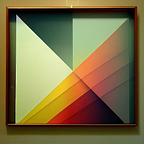Creativity
Levelling Up Your Creativity — By Making New Connections
Creativity comes from connecting existing ideas rather than developing entirely new ones.
Where do creative people get their ideas from? One possible answer to this is that they are highly observant, constantly noticing things in their surroundings, people watching, and storing valuable memories for future use.
But it’s also important to make the most of these experiences. And sometimes this involves connecting several different ideas into something new.
It’s not just about being smart
Are creative people simply smarter, and better at using information? To an extent, perhaps. But it has often been observed that the theory of intelligence which sees our brainpower as a single number, ‘IQ’, is far too narrow and simplistic (see ‘How to generate ideas’).
Later theories of intelligence focus on several different things, and in general, creativity places an emphasis on:
- Knowledge. You have to know things in order to come up with new ideas.
- Dispositions. Creative thinking involves a desire to think differently.
- Combinations. Often, creativity is less about coming up with a brand new idea, and more about finding interesting new ways of combining things you’ve learned or seen before.
So, what are the techniques that can be used to come up with more ideas? Here are five strategies for putting new ideas together in unusual ways, that can be adapted to multiple creative fields.
1. Developing older ideas
Older notes and note books are also worth revisiting periodically, as there may be half-developed ideas lurking which suddenly spark an idea that you missed at the time. As time goes on, you can find strategies for gathering ideas and putting them together in unusual or unexpected orders in a way that works in your creative field.
From time to time, it is well worth leafing through your older notebooks without a particular purpose in mind — this may spark new connections more effectively than searching for particular content.
2. A set of prompts
Taking the previous idea one step further, you could establish a specific set of prompts on slips of paper or index cards. These are quotes, ideas, facts, or anything else.
With these prompts, you can start to find new links and connections. Best of all, put them on cards so that you can shuffle them, and draw a few at random. You could also search for prompts here on Medium!
3. Strange times of day
This kind of work is best done late at night or first thing in the morning, not during the time when you are normally at your most productive (otherwise it could easily become a form of procrastination).
Surprisingly, we don’t do our best creative work when we are freshest and most focused. Those times are good for complex but routine tasks. Creativity can benefit from a being a little less focused, such as when you have just woken up.
These times of day help your mind to make novel connections.
4. Taking time
Creative thinking takes time. Many authors, artists and scientists (yes, science is also creative!) rush straight to the doing stage. But researchers have found that ideas take time to emerge.
Allow enough time to plan and to re-plan. Begin creative sessions by setting yourself five minutes to find fun links that combine randomly selected prompts (see above). Allow at least 20 minutes for brainstorming — and then brainstorm again at the later stages of a project!
5. New places
Thinking is closely connected with place. We think differently if we travel, visit new places, or even just look out of the window of a bus. So, try changing your location.
Linking your creative work to different places and occasions will be very helpful to future use of your skills in new settings. Psychologists and educators refer to this ability as transfer, and it is fundamentally creative — successful transfer involves making links between a familiar idea and a new context.
Mixing up your thinking and changing location will lead to more varied connections, and may also help when problems or contexts seem unfamiliar. After all, if your ideas are too closely connected to a specific context, it gets harder to use them in novel, creative ways.
Overall, creativity is less about finding ‘the great idea’ and more about combining existing elements and using them in new contexts.
Found this useful? Please 👏 and share this article to support it! You can read more on the same topic in my 2019 book, Creative Thinking. Also, why not sign up to get an email every time I publish a new article? Do that here! And check out more of my writing below…
